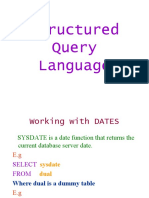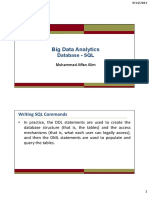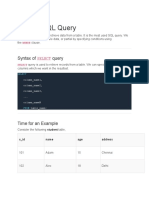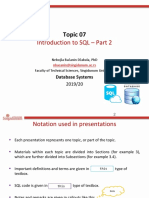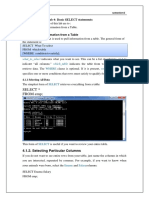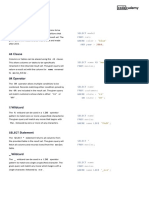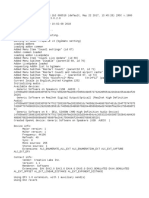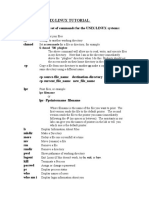0% found this document useful (0 votes)
49 views35 pagesWeek 09-10 (Oct 5-Oct 17) MC Data Query Language
ORDER BY STATE, CUSTOMER_NAME;
25
SELECT Example –
Sorting Results with the ORDER BY Clause
Output:
CUSTOMER_NAME CITY STATE
California Classics Santa Clara CA
Impressions Sacramento CA
M and H Casual Furniture Clearwater FL
Contemporary Casuals Gainesville FL
Seminole Interiors Seminole FL
Value Furniture Plano TX
Kaneohe Homes Kaneohe HI
26
GROUP BY and HAVING
- GROUP BY groups rows that have the same values in one or more columns
- HAVING acts as a filter on
Uploaded by
Deppres'd InsydeCopyright
© © All Rights Reserved
We take content rights seriously. If you suspect this is your content, claim it here.
Available Formats
Download as PDF, TXT or read online on Scribd
0% found this document useful (0 votes)
49 views35 pagesWeek 09-10 (Oct 5-Oct 17) MC Data Query Language
ORDER BY STATE, CUSTOMER_NAME;
25
SELECT Example –
Sorting Results with the ORDER BY Clause
Output:
CUSTOMER_NAME CITY STATE
California Classics Santa Clara CA
Impressions Sacramento CA
M and H Casual Furniture Clearwater FL
Contemporary Casuals Gainesville FL
Seminole Interiors Seminole FL
Value Furniture Plano TX
Kaneohe Homes Kaneohe HI
26
GROUP BY and HAVING
- GROUP BY groups rows that have the same values in one or more columns
- HAVING acts as a filter on
Uploaded by
Deppres'd InsydeCopyright
© © All Rights Reserved
We take content rights seriously. If you suspect this is your content, claim it here.
Available Formats
Download as PDF, TXT or read online on Scribd
/ 35





















